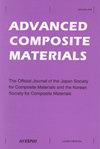Recent trend in stretchable composite sensors for wearable robot applications
IF 2.3
3区 材料科学
Q3 MATERIALS SCIENCE, COMPOSITES
引用次数: 1
Abstract
AbstractConventional sensors can detect the various physical and chemical changes that occur during deformation and the states of materials with a high accuracy. However, almost all existing sensors are bulky and stiff, making them highly susceptible to failure when used in large deformation-compliant structures. By contrast, despite their relatively-low resolution and accuracy, the demand for flexible and stretchable sensors used in detecting human motion and vital signs has drastically increased. There are several types of stretchable sensors that contain functional materials such as carbon nanotubes (CNTs). These stretchable sensors have different working principles and applications based on the attributes of their core components. Several electrical signals are used in the measurement of the different physical parameters such as the electrical resistance and capacitance. Triboelectric nanogeneration or voltage signals that can be identified under contact or impact loading conditions are employed in some measurement methods. Additionally, an array of microstructures with a special shape that is directly related to movement and deformation detection, as well as conductive nano-particles that are elaborately aligned along a certain direction for specific sensor applications, are used in the other methods. In this study, a review of the recently-developed high-performance stretchable sensors made from functional materials using new sensing mechanisms for wearable robot applications is provided.Keywords: Stretchable sensorswearable robotsnano-compositesgauge factor Disclosure statementNo potential conflict of interest was reported by the author(s).Additional informationFundingThe work was supported by the Chung-Ang University [2020 Young Scientist Scholarship]; National Research Foundation of Korea [RS-2023-00208286].可伸缩复合传感器在可穿戴机器人应用中的最新趋势
摘要传统传感器可以高精度地检测材料在变形和状态过程中发生的各种物理和化学变化。然而,几乎所有现有的传感器都是笨重和僵硬的,这使得它们在大变形适应结构中使用时非常容易失效。相比之下,尽管它们的分辨率和精度相对较低,但对用于检测人体运动和生命体征的柔性和可拉伸传感器的需求急剧增加。有几种类型的可拉伸传感器包含功能材料,如碳纳米管(CNTs)。这些可拉伸传感器根据其核心部件的属性具有不同的工作原理和应用。在测量电阻、电容等不同物理参数时,需要使用几种电信号。摩擦电纳米或电压信号可以识别在接触或冲击载荷条件下被用于一些测量方法。此外,在其他方法中还使用了与运动和变形检测直接相关的具有特殊形状的微结构阵列,以及为特定传感器应用而沿着特定方向精心排列的导电纳米颗粒。在这项研究中,综述了最近开发的高性能可拉伸传感器,这些传感器由功能材料制成,使用新的传感机构,用于可穿戴机器人的应用。关键词:可伸缩传感器可穿戴机器人纳米复合材料测量因子披露声明作者未报告潜在利益冲突。本研究由中央大学[2020年青年科学家奖学金]资助;韩国国家科学研究基金[RS-2023-00208286]。
本文章由计算机程序翻译,如有差异,请以英文原文为准。
求助全文
约1分钟内获得全文
求助全文
来源期刊

Advanced Composite Materials
工程技术-材料科学:复合
CiteScore
5.00
自引率
20.70%
发文量
54
审稿时长
3 months
期刊介绍:
"Advanced Composite Materials (ACM), a bi-monthly publication of the Japan Society for Composite Materials and the Korean Society for Composite Materials, provides an international forum for researchers, manufacturers and designers who are working in the field of composite materials and their structures. Issues contain articles on all aspects of current scientific and technological progress in this interdisciplinary field. The topics of interest are physical, chemical, mechanical and other properties of advanced composites as well as their constituent materials; experimental and theoretical studies relating microscopic to macroscopic behavior; testing and evaluation with emphasis on environmental effects and reliability; novel techniques of fabricating various types of composites and of forming structural components utilizing these materials; design and analysis for specific applications.
Advanced Composite Materials publishes refereed original research papers, review papers, technical papers and short notes as well as some translated papers originally published in the Journal of the Japan Society for Composite Materials. Issues also contain news items such as information on new materials and their processing."
 求助内容:
求助内容: 应助结果提醒方式:
应助结果提醒方式:


